Are you planning for the Kailash Mansarovar Yatra? If so, your preparations must already be in full swing. The Kailash Mansarovar Yatra is not an ordinary journey; it demands incredibly well-planned packing to ensure a safe and comfortable journey. This pilgrimage comprises physical stamina, mental willpower, and logistical planning, whether the strategic packing happens to be an important list to play with.
This Kailash Mansarovar Yatra Packing List is your complete guide to ensure smooth travelling. It provides you with the confidence to know you have catered to the very basics of trekking and comforts all the way to your medical supplies. Therefore, checking with the weather conditions, terrain, and grading of difficulty prior to going on the trail stands at high priority, just as the significance of what one should effectively pack accordingly. Each and every item becomes a shield against the odds in the way of the journey. Thus, this guide would serve to inspire purposeful and intelligent packing.
With the Kailash Mansarovar Yatra being conducted at high altitude, reaching almost 5630m on the eve of the breathtakingly remote beauty of Tibet, a light, comfortable, and organized backpack would go a long way toward enhancing one's experience. Though the trek only lasts three days, just negotiating hours of the ascent and descent above 4000m makes it a rather grueling one. This guide will give you the knowledge to face these challenges, enjoy maximum comfort, and be totally immersed in the spiritual and natural charm of the Kailash Mansarovar Yatra.
Listen to Our Podcast: Kailash Yatra Packing List Suggestion
Kailash Mansarovar Yatra Facts
Here are some facts related to the sacred pilgrimage, Kailash Mansarovar Yatra:
|
Journey |
Kailash Mansarovar Yatra |
|
Trip Duration |
Minimum: 10 Days Maximum: 17 Days |
|
Major Attractions |
Mount Kailash (6638 m) Lake Mansarovar (4600 m) Kyirong Town (2850 m) Yama Dwar (4750 m) |
|
Average Elevation |
4000 m |
|
Maximum Elevation |
5600 m (Dolma la Pass) |
|
Difficulty |
Strenuous |
|
Starting point |
Kathmandu, Nepal |
|
Ending Point |
Kathmandu, Nepal |
What is Kailash Mansarovar Yatra?
Kailash Mansarovar Yatra is a deeply spiritual pilgrimage centered around two focal points: Mount Kailash and Lake Mansarovar. The above places form important pilgrimage sites for many religions majorly Hinduism, Buddhism, Jainism, as well as the Bon religion. While for Hindus it is the abode of Lord Shiva, the sacred water of Mansarovar Lake imparts purity and divine energy spiritually. Though generally one may perform the Yatra between the months of May and September, it has a very busy calendar for pilgrims, seekers, adventure lovers, and nature enthusiasts who make a schedule to visit here during this period.
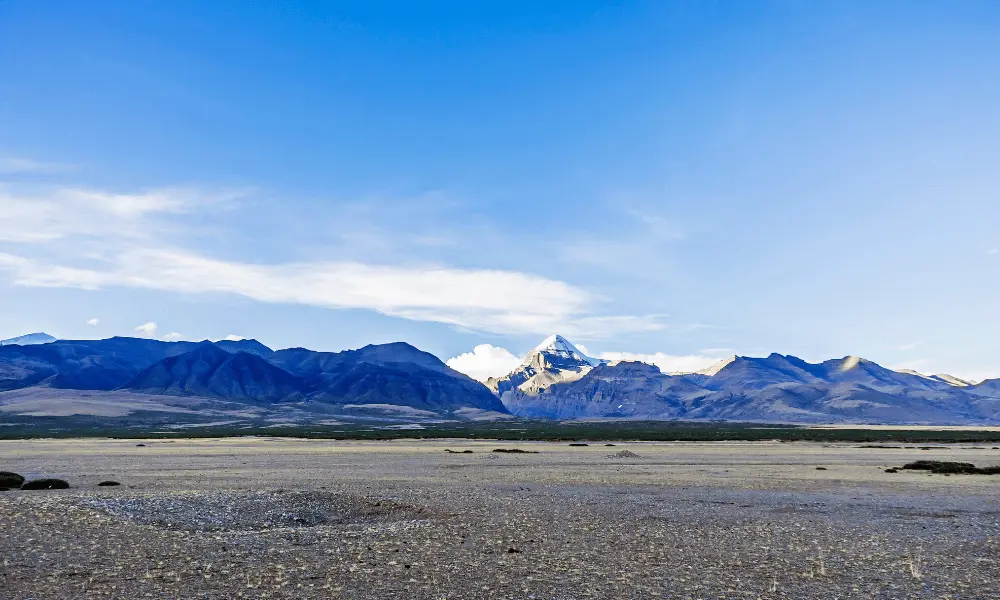
The major part of the Yatra involves the ritualistic parikrama around Mount Kailash, which is considered an extremely auspicious deed. During the Yatra, Hindus take a dip into the holy Mansarovar Lake and perform pooja at Mount Kailash, which is considered the holy abode of Shiva. Buddhists consider the mountain as the home of Buddha Cakrasamvara, whereas Jains regard it as the site where their first Tirthankara, Rishabhanatha, attained moksha (liberation). Mount Kailash is recognized by the followers of the Bon tradition as a divine mountain because it is the nine-storied Swastika-shaped mountain leading to the heavens. Participating in the yatra means a rare, transforming experience to immerse oneself in the great spirituality and beauty of nature that the Tibetan Himalayas have to offer-this experience is both tough, enduring and fulfilling.
Kailash Mansarovar Yatra Challenges
The Kailash Mansarovar Yatra is a highly spiritually significant pilgrimage, but it has its own physical and logistical obstacles. The most challenging part of the yatra is perhaps the high altitude of the terrain. For instance, the journey attains a height of 5,600 meters at the Kora (parikrama), which is reached by trekking all the way. At such a height, the presence of oxygen reduces significantly, thus increasing the chances for altitude sickness, fatigue, headaches, and trouble when breathing. The weather can change from blazing sun to snowstorm and near-freezing temperatures within hours. Trekking under the extremes develops not just physical fitness but mental strength as well as willpower.
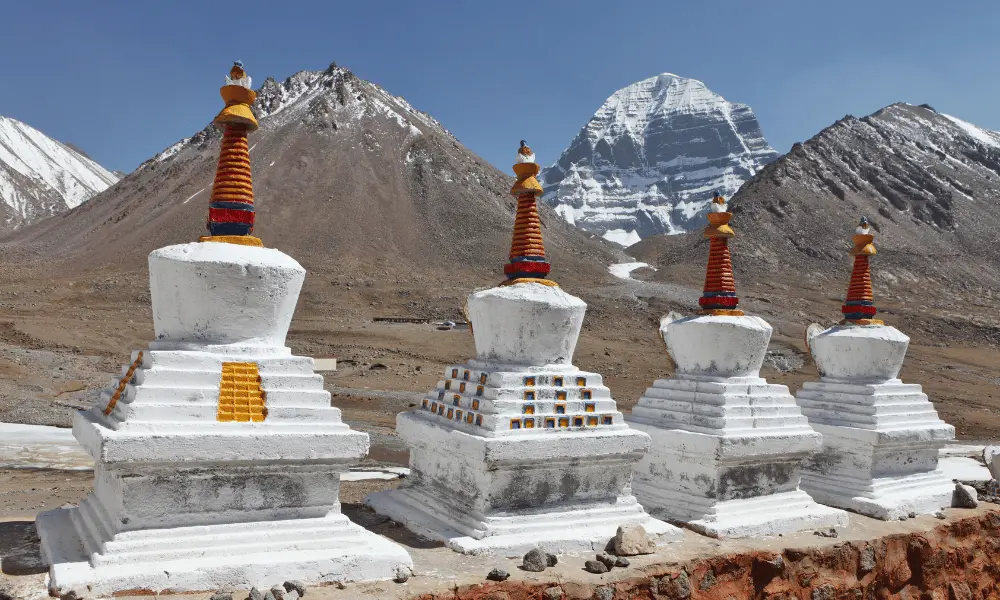
Another challenge is the geography, as the regions involve remote terrain. The route along which the pilgrim travels, especially on the Tibetan side, has only basic infrastructure, and there is little access to medical facilities, communication networks, and emergency services. Rocky terrain, steep elevation, and occasional slippery footing while trekking require a well-packed backpack. The trek also means crossing borders, requiring different permits and legal formalities, sometimes tedious and complicated. The pilgrims must have insights on the basic facilities during the yatra and compromise on many comforts calling for patience, endurance, and adaptability along this arduous pilgrimage.
Well Planned Packing Importance
Essentially, preparing for the Kailash Mansarovar Yatra goes beyond simply throwing things in a bag. Any journey, in other words, requires packing essentials depending on the place, comfort, basic needs, and the purpose of the trip. A packing list for the Kailash Mansarovar Yatra, which is a high-altitude trek in the Tibetan Himalayas, becomes even more important to guarantee an enjoyable experience. The fuss here is preparation.
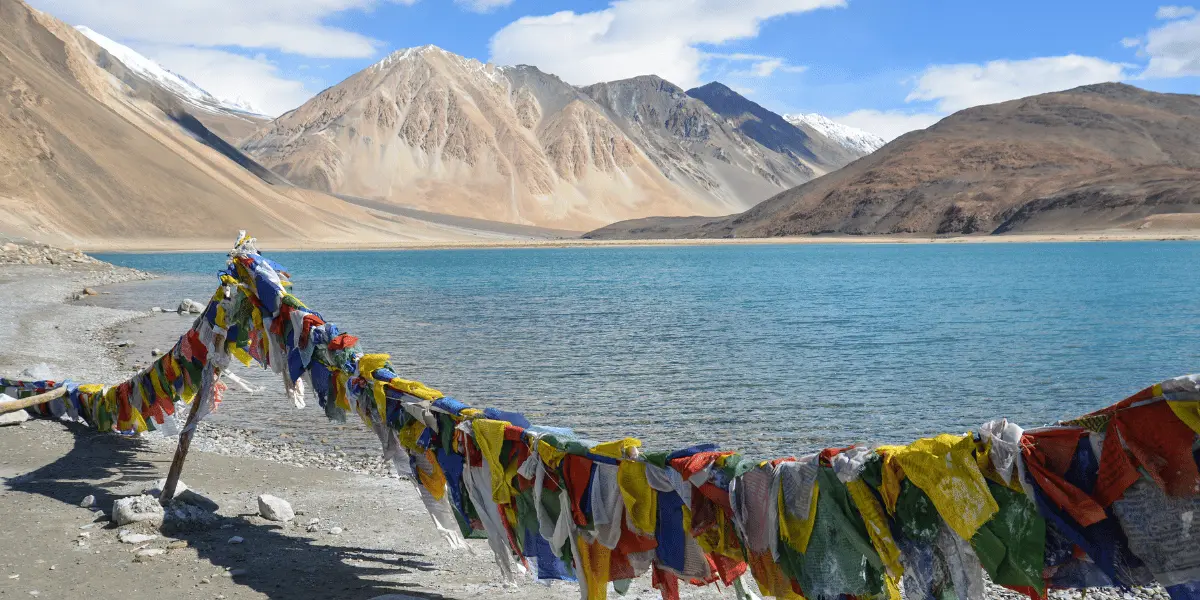
Clothing, ideally layered and warm, protects against shifting weather conditions from head to toe. A personal hygiene kit assists with acclimatizing to the remote setting in comfort. Trekking gear, like sturdy boots and trekking poles, will assist the traveler with steep ascents and descents at high altitude. Health first during this journey; thus, a personal medical kit to cover anything unusual not otherwise addressed would prove beneficial.
In this way, all items need to be kept organized in a lightweight backpack to assist any pilgrim with the challenges of the trail, in safety and comfort, to enjoy a peaceful pilgrimage. The selection of reusable items will also go a long way toward conserving the environment.
Kailash Yatra Packing List
The list provided below is not merely a packing list; it's what helps you navigate the challenges involved in the yatra. From the basic to the ultimate lifesaver, each item in the list has its own purpose assisting directly or indirectly to make every part of your journey a success. So, get some insights on what items can be your companion for the whole yatra:

Clothing Requirements
|
Down Jacket |
|
Warm Pants |
|
Long Sleeved Shirt |
|
Fleece Jackets |
|
Woollen Socks |
|
Thermals |
|
Waterproof Gloves |
|
Comfortable Inners |
|
Hat/Cap |
|
Slippers |
Trekking Gears
|
Backpack |
|
Hiking Shoes |
|
Trekking Poles |
|
Trousers |
|
Rain Jacket |
|
Windcheater |
|
Sunglasses |
|
Personal Water Bottle |
Documents Required
|
Passport (minimum 9 month validity) |
|
Tibet Travel Permit and Visa (TTP) |
|
Nepalese Visa (not required for Indian nationals; the rest can get on arrival) |
|
Passport Size Photos |
|
Travel Insurance |
|
Currency (Chinese Yuan and Nepalese Rupee) |
Medical Supply Kit
|
Paracetamol |
|
Diamox |
|
Pain Relief Spray/Medicine |
|
Bandage |
|
Antiseptic Ointment |
|
Cotton Gauge |
|
Allergy Medicines |
Personal Hygiene
|
Sunscreen |
|
Moisturiser |
|
Wet Tissues |
|
Toilet Paper |
|
Dust Mask |
|
Sanitizer |
|
Towel |
|
Dental Kit |
Additional Items
|
Camera and Batteries |
|
Headlight |
|
Powerbank |
|
Snacks |
Clothing Requirements
Overall packing for the Kailash Mansarovar Yatra must include proper clothing to adjust to the different landscapes and climates that come with the changes. On this pilgrimage, clothing becomes more than mere appearance. It also serves as the first barrier to be breached by changing weather, different temperatures, and unforeseen troubles on the way.

A light layer is sufficient in the temperate climate of Nepal, but as altitudes increase, temperatures drop with very unpredictable weather patterns. Traveling in a vehicle allows one to layer differently, but there is no option with trekking in mountain regions: it is more rigid in terms of clothing. At extreme elevations, exposure to cold winds, bad weather, and altitude sickness are necessary for warm, wind-resistant clothing.
- Down Jackets: Insulation and wind resistance are the two properties that make a down jacket the ultimate choice in the Himalayas. Very lightweight, it can be compressed to the size of a small pack and easily thrown into a pack, as opposed to all other heavy jackets.
- Warm Pants: They provide crucial insulation, trapping your body heat for comfort in extreme cold. Winds and harsh sunlight are also kept out.
- Fleece Jackets: It combines insulation, quick-drying abilities and darkness for all weather conditions. This Yatra will have weather ranging from moderate to extreme cold; therefore, the fleece jacket will adapt to the different temperatures throughout this journey.
- Long Sleeved Shirt: A long-sleeved shirt protects your skin from the sun and wind when walking/trekking. If it gets too warm, you can simply roll up the sleeves, or you can wear them under a jacket to keep warm.
- Woollen Socks: Unlike other common socks, wool socks keep your feet warm, dry, odour-free, and blister-free, offering comfort throughout the journey.
- Waterproof Gloves: Waterproofing will keep your hands dry, warm, and safe throughout your trip while allowing you to perform some essentials, such as carrying trekking poles, adjusting your backpack straps, and using your mobile phone, without even taking them off.
- Thermals: Thermals are rudimentary yet reinforced against the cold. It keeps the body dry, letting the body breathe and wick moisture away while being very light and space-efficient.
- Comfortable Inners: Freedom of movement and comfort are of utmost importance during your trip. Comfortable inners are made of quick-drying fabrics for sportswear that allow for any movement of the body while minimizing body odour.
- Hat/Cap: It protects your face and neck from UV rays, thus preventing sunburn. In winter, a warm cap would keep your ears and head warm, providing comfort against the chilly night breeze.
- Slippers: Slippers are quite versatile and therefore excellent to wear while moving around the area during stops and to relieve tired feet towards the end of the day's work.
Trekking Gears
The Kailash Mansarovar Yatra, a pilgrimage to the autonomous Tibet of China, is an arduous trek requiring about three days of trekking for the Kora around Mount Kailash, demanding both physical and mental strength. High altitude, where air is thinner and oxygen poorer, makes the yatra challenging. Even the smallest task becomes massive work. That is when the right gear becomes your silent companion for your trek towards physical well-being and stability. It is very important to bring appropriate trekking gear because of the diverse terrain and the high altitude, as well as gearing up your mental strength.
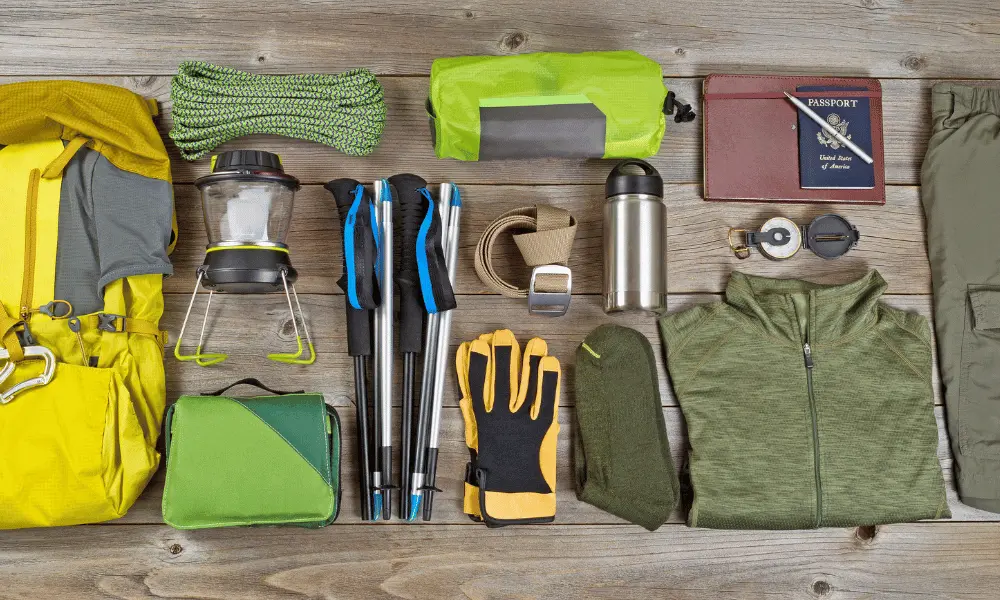
- Backpack: A well organized light backpack with good straps is essential for this Yatra. While adding your packing items to your pack, layering the items from bottom to top according to the most frequently necessary items to the least ones plays a pivotal role in making your Yatra easy.
- Trekking Poles: The trek involves diverse terrain, including rocky paths, active ascents, and descents. Trekking poles serve as a support and add stability, preventing slips and providing greater control.
- Hiking Shoes: They provide a strong grip on loose rocks and sand, preventing slips and falls. Also, sturdy hiking shoes with good ankle support protect your feet from cuts, scrapes, sprains, and blisters caused by rocks or uneven terrain.
- Trousers: At high altitudes, trousers provide warmth and insulation, preventing cold. It also protects you from scratches and scrapes if you fall.
- Windcheater: At high altitude, this region has very strong winds, especially during the afternoon. A wind cheater protects you from cold Himalayan air and adds an extra layer of warmth. Also, it protects you from dust and dirt.
- Rain Jacket: The weather in this region is unpredictable. Sudden downpours can occur even during the dry season. A reliable rain jacket ensures you are prepared for any sudden change in weather. Moreover, a good rain jacket shields you from not just rain but also wind and snow.
- Sunglasses: Sunglasses are highly recommended on this yatra to avoid intense sunlight and protect your eyes from the irritation of wind and dust. In the case of snow, the bright reflection of sunlight in the snow can cause discomfort in your eyes. Sunglasses with polarised lenses help you avoid the brightness and clear your vision.
- Personal Water Bottle: As regular hydration is crucial throughout the day to maintain good health, having your own water bottle ensures constant access to safe and easily available water. Additionally, it contributes to environmental sustainability and reduces waste, unlike regular mineral water.
Documents Required
The documents you carry are what let you secure yourself legally to enter and exit the foreign country without any complications. It includes visas, permits, and passports, all of which should be in good terms with the legal requirements of Tibet's autonomous region- guaranteeing the safety and painlessness of travel.

- Passport: A passport works as a globally recognised proof of identity and nationality of a person. It verifies who one is to government officials at borders and checkpoints, making sure they get easy border clearance. In the case of the Kailash Mansarovar Yatra, one’s passport becomes the legal document for obtaining the necessary visas and permits required for entering Tibet. Make sure your passport is valid for a minimum of nine months. With the original passport: obtain a photocopy of your passport for your own convenience while traveling.
- Travel to Tibet Permit (TTP): A Tibet travel permit for Tibet visa is compulsory for you to get into Tibet, to access places like Mansarovar Lake and Mount Kailash. It should be applied 35-45 minutes before your arrival. You can choose a reputable travel agency to apply for the application and handle the process. For Indian pilgrims, the permits are handled by the Ministry of External Affairs. When applying for the permit, specific dates, the route of your travel, and the group of travellers are mentioned. Entering a route not mentioned in the application is not permitted.
- Nepalese Visa: Unless you’re a citizen of India, every foreign national, including NRIs, is required to get a visa to enter Nepal. You can get an on-arrival visa at Kathmandu Airport.
- Travel Insurance: It is highly recommended and crucial to have travel insurance for the Kailash Mansarovar Yatra. As it is a challenging journey, travelling to this remote region comes with different risks and unexpected situations. Hence, you will need travel insurance covering medical emergencies, helicopter rescue, and trip cancellations. Moreover, you are travelling to an altitude above 5000m. Choose a policy that specifically covers travel at high altitudes. We are always there to assist you if you want to obtain travel insurance for the yatra.
- Passport Sized Photos: These are needed to process different applications and permits throughout your journey. It is crucial that an individual carry his or her latest photograph. Extra photographs should be kept at hand. This comes in handy in case of unforeseen circumstances or the loss of the main set of documents.
- Currency: Currency differs depending on the route taken to reach the holy place of Kailash. Primarily, Nepalese rupees (NPR) and Chinese yuan (CNY) are used. It is generally recommended to exchange your currency for NPR or CNY before you arrive in Nepal or Tibet. You can also change your currency in Nepal at the currency exchange office. It's always better if you have some cash in hand, as ATMs are hard to find and credit cards are not accepted in remote areas.
Medical Supply Kit
The Kailash Mansarovar Yatra is quite a strenuous one crossing rough, isolated regions, and the changes in height and weather may give rise to some health problems. With only very limited medical facilities available at such high altitude and difficult terrain, it is important to prepare a very well-stocked first-aid kit for minor ailments and injuries caused on the trek. Here are some items to include in your medical kit to pack for your Kailash Mansarovar Yatra.

- Paracetamol: Paracetamol can effectively manage headaches, fevers, and muscle pain in any environment. These are also the symptoms of altitude sickness at high altitude.
- Diamox: As you are travelling to high altitude, there are many chances that you get caught in altitude sickness, especially for those with no prior experience. Diamox helps in the prevention of altitude sickness.
- Pain relief spray/medicine: As it is a challenging trek, in case of any sprain, bruise, or wound in your journey, a pain relief spray/medicine reduces instant pain and muscle soreness.
- Bandage: You will need a bandage to dress your wounds, support your injured joints, and control heavy bleeding.
- Antiseptic Ointments: Due to uneven terrain, active clubs, and descents, there are chances of cuts and blisters on the trail. Antiseptic ointments help to heal these wounds, further preventing infection.
- Cotton Gauge: A cotton gauge helps control bleeding in cases of minor injuries.
- Allergy medicines: If you are sensitive to or known to have allergies, carrying an allergy medicine is very significant. Allergies can be even more intense at high altitudes.
Moreover, if you have any medications you take on a regular basis, consider carrying those prescribed medications. It is also a good idea to carry a copy of your medical history in case of an emergency. It's best to keep your medicine in a cool and dry place to protect it from heat and moisture.
Personal Hygiene
Food, water, basic survival tools, comfort items, medications, and some small items should not be overlooked while preparing the to-go packing list. A personal hygiene kit for the Kailash Mansarovar Yatra can be a great addition on this spiritual journey through remote and breathtaking landscapes stretching to Tibet, leaving you without the most basic amenities. Also, it provides the comfort that a person would always want to feel somewhat at home.
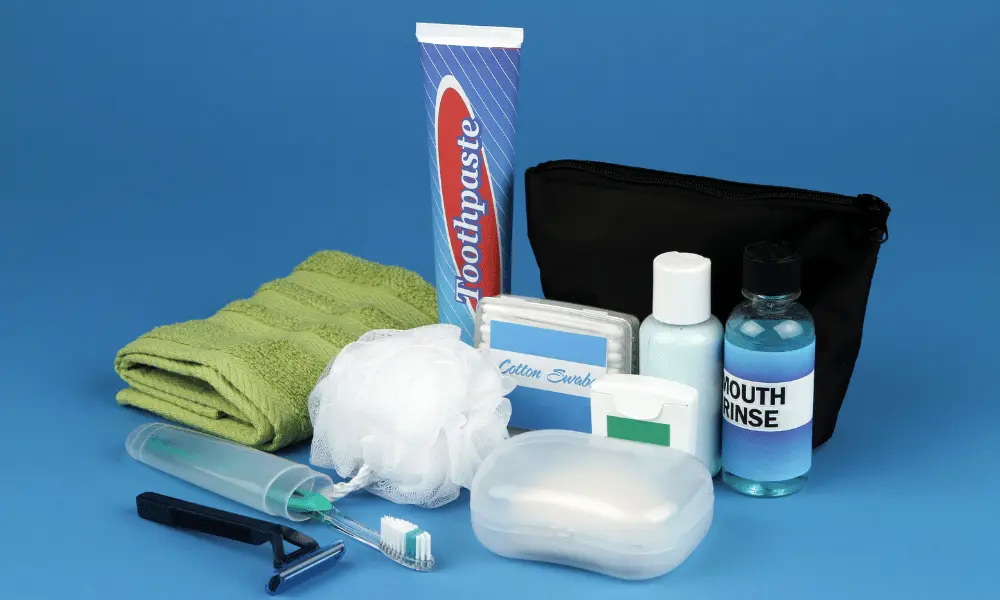
- Sunscreen: Sunscreen acts as a shield for your skin from the sun’s harmful rays. It also protects you from strong UV rays when at higher altitudes.
- Moisturiser: The strange outside air steals moisture from your skin. Moisturiser locks moisture into your skin, even when the mountain air is dry.
- Wet Wipes: Wet wipes come in handy for anything from cleaning the face to providing moisture to other body surfaces. It also helps the body stay dry and odour-free.
- Dust Mask: Dust masks are small accessories that keep the dusty roads of the lower altitudes away from your face and simultaneously block dry mountain air where needed.
- Toilet Paper and Sanitizer: Your clean-living kit with toilet paper and sanitiser is a must-have in water-scarce areas.
- Towel: A towel is essential for drying the body and keeping one from suffering, especially in cooler climates. Further, it reduces the frequency of using disposable wipes or tissue paper, thereby decreasing waste.
- Dental Kit: A dental kit is one of the best things to carry so that you are capable of taking care of your oral hygiene even in difficult and remote areas. A dental kit therefore allows you to solve any problems with your teeth and maintain general comfort throughout your journey.
Additional Items
While the essentials for your Kailash Mansarovar Yatra are crucial, some thoughtful extras can make it a uniquely enriching experience for you:

- Camera and Batteries: The Yatra provides amazing views of landscapes, religious sites, and other holy places. A camera gives you a very cherished memory and will enable you to share it with your family and friends. Batteries for the camera are a wise investment because electricity is sparse during your trail. But then again, do believe that cultural sensitivities must be taken into consideration, for it is not wise to take photos of a restricted local custom.
- Headlights: During early mornings or evenings, headlamps provide you with hands-free assistance in walking, reading, or doing any other tasks without disturbing others. It also improves visibility in low-light conditions to navigate uneven terrain in case you are walking too early or too late.
- Power bank: A power bank ensures your phone won’t die and allows you to stay connected. Power outages might be frequent in remote areas. It provides you with ease of mind knowing you have a backup source of charging.
- Snacks: You might be going a little weak because of travel time. Either way, long drives or long treks, your favorite snacks must be at hand. In positive participation to your journey, keep something you can eat on yourself by adding snacks on to your packing list. Choose those that provide nutrition and are high on energy so as to maintain good health.
Deciding whether or not these items are required depends on your individual needs and priorities. However, considering their potential to enrich your yatra in various ways, they can certainly be a valuable addition to your packing list. Additionally, you can always choose environment friendly items for the additional items you carry, such as solar chargers.
Things not to Carry or Do
Kailash Mansarovar Yatra is a sacred pilgrimage. Thus, it is important to carry items that are comfortable, reverent of the sacred ambience, and mindful of the environment. Further, there is an advisability of not bringing anything that interferes with the personal experience or spoils the mass of nature and culture. Moreover, all belongings must comply with local laws for facilitating clear and accessible border processes. Thus, here's a list of things to exclude from your packing:
|
Carrying materials related to the Dalai Lama |
|
Flying drones without authorization |
|
Avoid carrying sleeveless clothes and clothes that reveal your knees |
|
Non-vegetarian food, alcohol, or tobacco products |
|
Not to carry plastic bags or disposable items |
|
Don’t take photos where prohibited |
Kailash Mansarovar Yatra Packages
We have various options for the Kailash Mansarovar Yatra suited to several requirements and budgets. This is a difficult pilgrimage, so to provide comfort and safety, we ensure that the experience is satisfying. Our packages consider every detail so you can have the holy experience that you are yearning for. We take care of all essential arrangements: transportation, visas, guides, meals, etc. and these would give you options either to drive or take flights or helicopter rides. Among our much-in-demand offerings are the Kailash Mansarovar Yatra by Helicopter and the Kailash Mansarovar Yatra by Drive via Kyirong for Indians.
Kailash Mansarovar Yatra by Heli
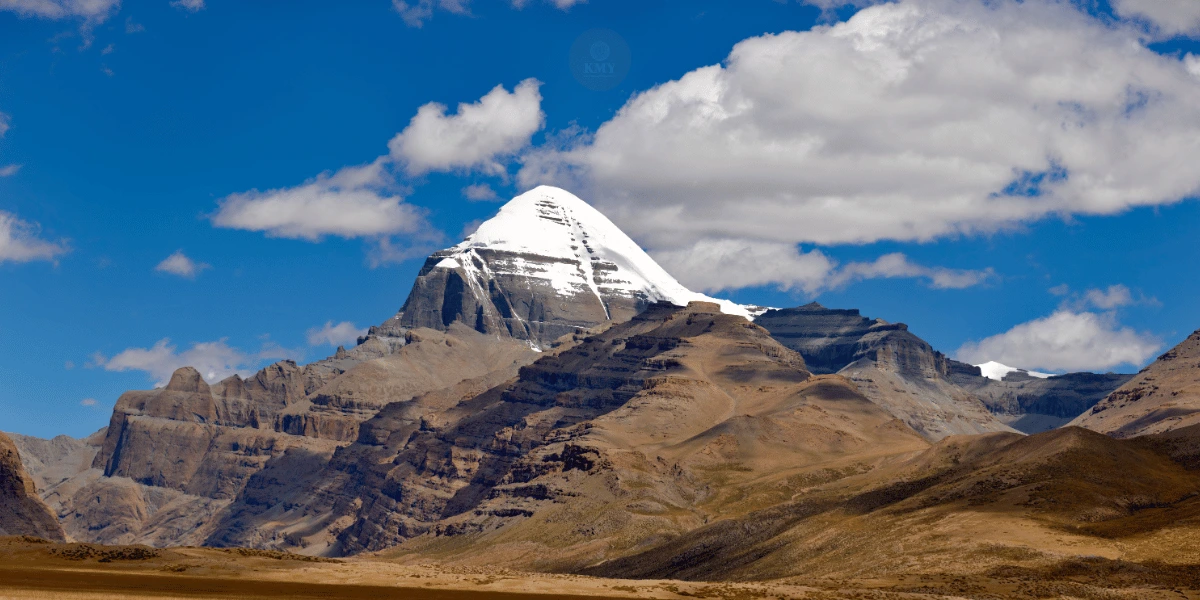
The Kailash Mansarovar Yatra by Helicopter is a 14 day spiritual journey specifically created to provide easy access to Mt. Kailash and Lake Mansarovar for elders and those unable to undertake long treks. This package will offer beautiful helicopter rides to Hilsa, travel through Tibet, and important highlights like Kathmandu sightseeing and exploration of the sacred Kailash Mansarovar area.
Outline Itinerary
|
DAY 01: Kathmandu Arrival. |
|
DAY 02: Visa Application, Kathmandu Sightseeing. |
|
DAY 03: Bhaktapur Sightseeing. |
|
Day 04: Chandragiri Sightseeing. |
|
Day 05: Packing, Fly to Nepalgunj. |
|
Day 06: Fly from Nepalgunj to Simikot. (2812 m) |
|
Day 07: Simikot to Hilsa to Taklakot. (3900 m) |
|
Day 08: Acclimatisation day at Taklakot. |
|
Day 09: Drive from Taklakot to Lake Mansarovar. (4650 m) |
|
Day 10: Drive to Yama Dwara, Trek to Derapuk. (5050 m) |
|
Day 11: Trek to Zuthulpuk. (4800 m) |
|
Day 12: Zuthulpuk to Hilsa or Simikot. |
|
Day 13: Hilsa to Simikot, Fly back to Kathmandu via Nepalgunj. |
|
Day 14: Departure. |
Learn More: Kailash Mansarovar Yatra by Helicopter for NRIs
Kailash Mansarovar Yatra by Drive for Indians
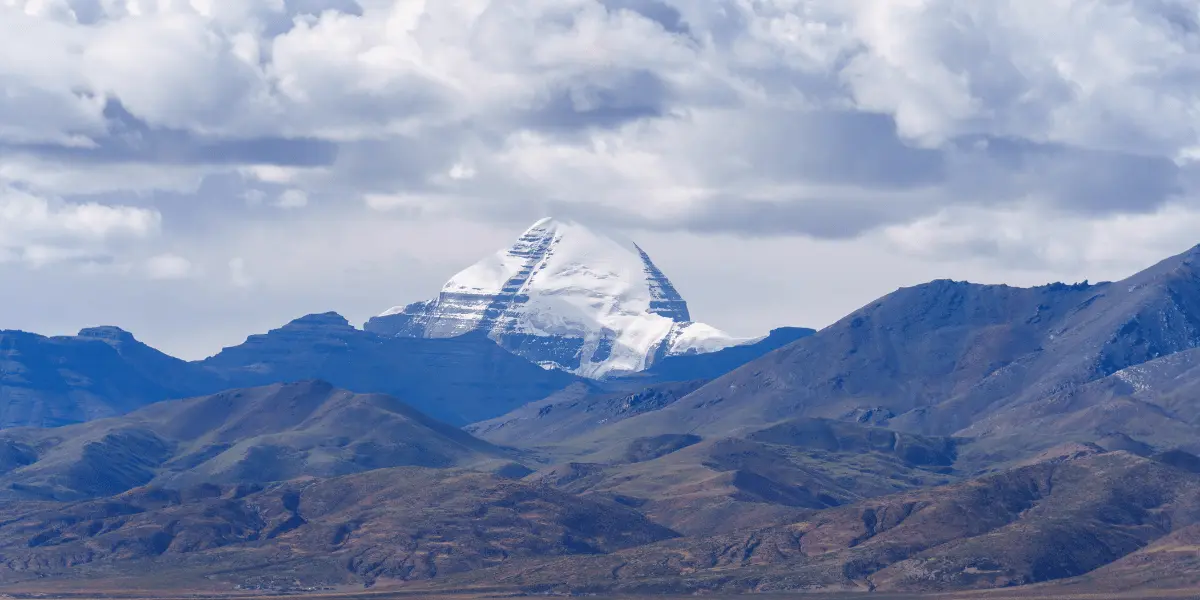 Outline Itinerary
Outline Itinerary
Kailash Mansarovar Yatra by Drive for Indian Citizens incorporates a divine journey across Nepal and Tibet. The package includes cultural visits in Kathmandu, like Pashupatinath and Patan Durbar Square, along with a spiritual adventure to Mt. Kailash and Lake Mansarovar in Tibet. It is truly an ideal blend as it combines cultural and spiritual exploration especially designed for Indian pilgrims.
|
DAY 01: Kathmandu Arrival. |
|
DAY 02: Kathmandu Sightseeing. |
|
DAY 3: Drive to Dhunche or Syabrubesi or Timure |
|
DAY 04: Drive to Kyirong. (2850 m) |
|
DAY 05: Kyirong Acclimatization. |
|
DAY 06: Drive to Saga. (4500 m) |
|
DAY 07: Drive to Lake Mansarovar. (4650 m) |
|
DAY 08: Drive to Darchen. (4700 m) |
|
DAY 09: Drive to Yama Dwara, Trek to Derapuk. (5050 m) |
|
DAY 10: Trek to Zuthulphuk. |
|
DAY 11: Zuthulphuk to Saga. |
|
DAY 12: Drive back to Kyirong. |
|
DAY 13: Drive to Kathmandu. |
|
DAY 14: Departure. |
Learn More: Kailash Mansarovar Yatra by Drive for Indians
Short Kailash Mansarovar Yatra
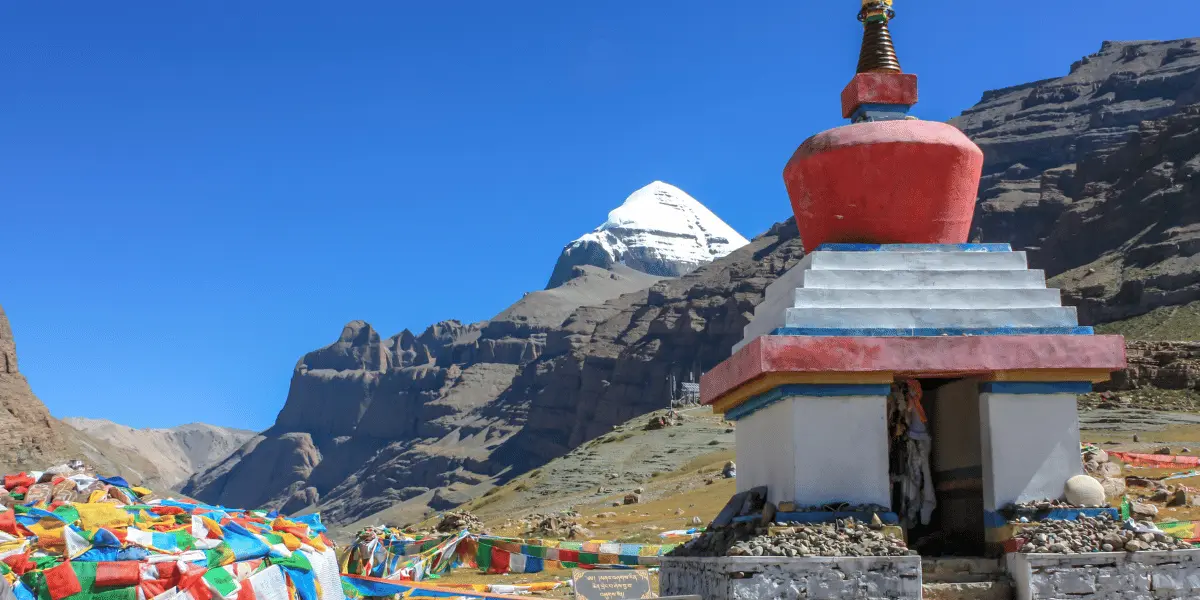
A Short Kailash Mansarovar Yatra Package for 13 days, especially meant for pilgrims who have no time, comprises heli transfers, drive and treks to the holy Mount Kailash and Lake Mansarovar with a mixture of spiritual and beautiful Tibetan scenery. It is very suitable for a busy pilgrim with the least time possible to complete a meaningful trip.
Outline Itinerary
|
DAY 01: Kathmandu Arrival. |
|
DAY 02: Visa Application, Kathmandu Sightseeing. |
|
DAY 03: Bhaktapur Sightseeing. |
|
DAY 04: Trip Preparation, Fly to Timure. |
|
DAY 05: Drive to Kyirong. (2850 m) |
|
DAY 06: Drive to Saga. (4500 m) |
|
DAY 07: Drive from Saga to Lake Mansarovar. (4650 m) |
|
DAY 08: Drive to Darchen. (4700 m) |
|
DAY 09: Drive to Yama Dwara, Trek to Derapuk. (5050 m) |
|
DAY 10: Trek to Zuthulphuk, Drive to Darchen. (4650 m) |
|
DAY 11: Drive to Kyirong. |
|
DAY 12: Drive back to Timure, Fly to Kathmandu. |
|
DAY 13: Departure. |
Learn More: Short Kailash Mansarovar Yatra
Kailash Mansarovar Yatra by Heli from Lucknow
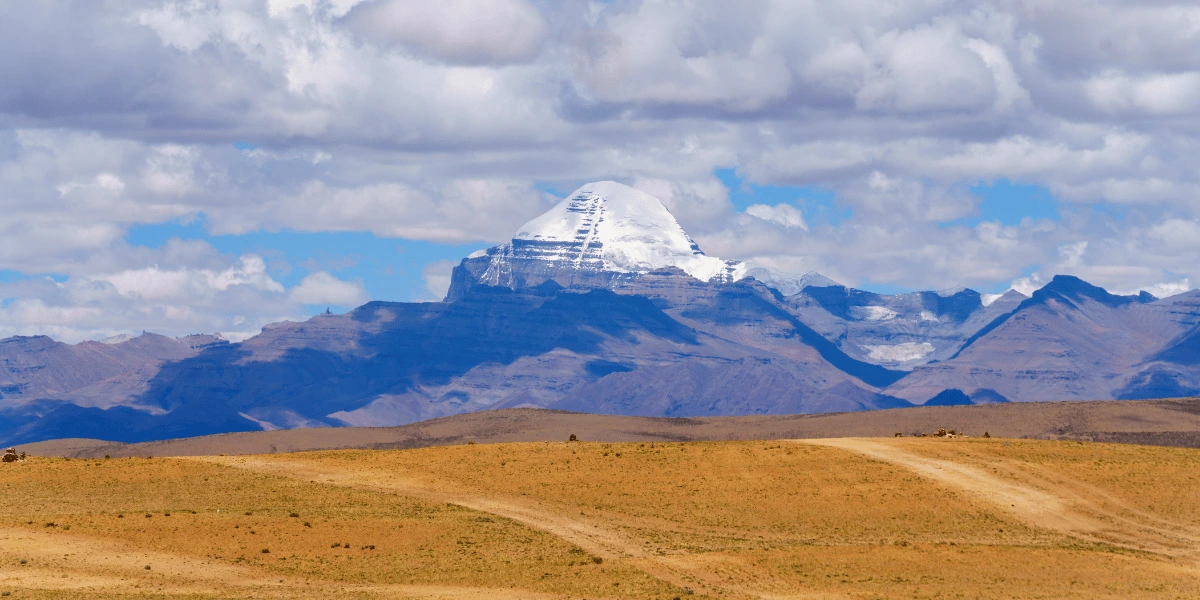
Kailash Mansarovar Yatra by Helicopter from Lucknow is an extremely holistic journey of 10 days organized for the Indian pilgrims with a quick and comfortable route. The journey begins with a drive from Lucknow to Nepalgunj, a scheduled flight to Simikot, followed by a helicopter flight from Simikot to Hilsa. Truly made for people with little time to devote, the package assures seamless access to the divine beauty of Mt. Kailash and Lake Mansarovar without the hassle of a long drive.
Outline Itinerary
|
DAY 01: Lucknow Arrival, Transfer to Nepalgunj. |
|
DAY 02: Fly to Simikot. |
|
DAY 03: Heli to Hilsa, Drive to Taklakot. |
|
DAY 04: Acclimatization Day at Taklakot. |
|
DAY 05: Drive to Lake Mansarovar. |
|
DAY 06: Drive to Yama Dwar, Trek to Dirapuk. |
|
DAY 07: Trek to Zuthulphuk. |
|
DAY 08: Zutulpuk to Hilsa or Simikot. |
|
DAY 09: Fly to Nepalgunj. |
|
DAY 10: Transfer to Lucknow. |
Learn More: Kailash Mansarovar Yatra by Helicopter from Lucknow
Kailash Mansarovar Yatra via Lhasa
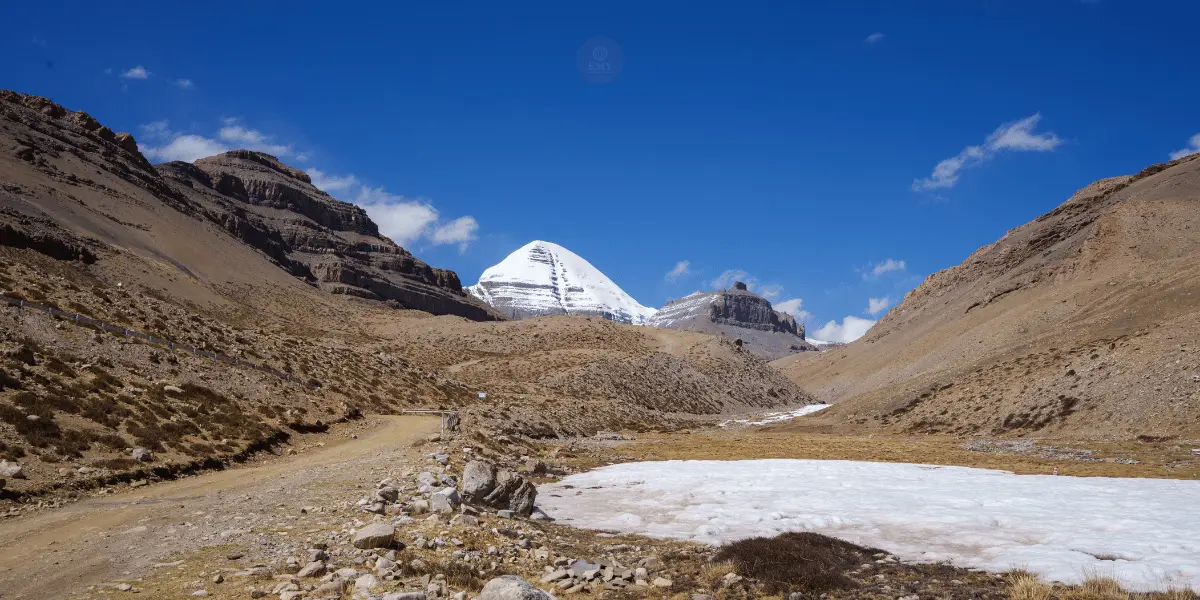
Kailash Mansarovar Yatra via Lhasa with Everest Base Camp is a unique blend of spirituality and culture. The tour consists of Lhasa, North Everest Base Camp (without trekking), and holy sites including Mount Kailash and Lake Mansarovar. Visit Kathmandu and Bhaktapur in Nepal on the way and embrace the culture and pristine scenery of Tibet. It is a soul-enriching, transforming pilgrimage through the heart of the Himalayas.
Outline Itinerary
|
DAY 01: Kathmandu Arrival. |
|
DAY 02: Visa Application, Kathmandu Sightseeing. |
|
Day 03: Bhaktapur Sightseeing. |
|
DAY 04: Visa Collection, Trip Preparation. |
|
DAY 05: Fly to Lhasa. |
|
DAY 06: Lhasa Sightseeing. |
|
DAY 07: Lhasa Sightseeing. |
|
DAY 08: Drive to Shigatse, Enroute Sightseeing. |
|
DAY 09: Drive to Tingri (4348 m), Explore Everest Base Camp. |
|
DAY 10: Drive to Saga. (4500 m) |
|
DAY 11: Drive from Saga to Lake Mansarovar. (4650 m) |
|
DAY 12: Drive to Darchen. (4700 m) |
|
DAY 13: Drive to Yama Dwara, Trek to Deruphuk. (5050 m) |
|
DAY 14: Trek to Zuthulphuk, Drive to Darchen. (4650 m) |
|
DAY 15: Drive to Kyirong. |
|
DAY 16: Drive to Kathmandu. |
|
DAY 17: Departure. |
Learn More: Kailash Mansarovar Yatra by Flight via Lhasa
Conclusion
Kailash Mansarovar Yatra combines the test of physical capabilities along with mental endurance, and smart packing is a crucial factor for a safe, easy, and smooth journey. This pilgrimage to the raw landscapes of Tibet provides one with deep immersion into beautiful scenery, spirituality, and historical cultures.
The Kailash Mansarovar Yatra Packing List is a complete guide to how you can pack efficiently, which touches on everything from clothes and trekking gear to personal hygiene and medical supplies. Those clothing layers and gear stand for your assurance of comfort and warmth against the myriad of terrains and ever-changing Himalayan climate. The medical kit stands for assuring you of being in good shape to carry on with your yatra. Personal hygiene is all about keeping your footprint to a minimum. All in all, this guide stresses the importance of a well-planned bag and the packing list contained within.
Thus, these points help in enriching this blog so that one can equip oneself to strike a balance between comfort and flexibility and cope with the challenges offered by the Himalayan region of Tibet. As you prepare for your Kailash Mansarovar Yatra, remember to embrace environmental health, minimize waste, and respect the local setting. May you travel light and live heavy, filled with experiences and memories.
Frequently Asked Questions (FAQs)
Here are some frequently asked questions for Kailash Yatra:
Should I carry camping gear for the Kailash Yatra?
Carrying camping gear for the Kailash Yatra is generally not necessary. All the overnight stops have proper hotel/guest house facilities organized along the walk by tour operators you are travelling with, which include lodging arrangements. If camping is a different experience you would like to try while on the trip, we can provide you with camping equipment.
Can I buy or rent local trekking gear?
Sure, buying or renting trekking gear is an easy job in Nepal, especially in the Thamel area of Kathmandu. Local markets offer items at very cheap prices. However, if you prefer brands or comfort and familiarity, you might as well carry trekking gear from your own home country.
Should I carry spiritual items?
In fact, a lot of pilgrims like to bring certain personal or religious objects with them, which include rudraksha beads, malas (prayer beads), flags or small images, and idols of the deity to be worshipped. Some people carry books or mantras to chant them daily. If you want to do certain rituals, pack your small puja samagri needed for the tradition that you follow. Those tokens of spirituality make the Yatra further enhanced for you in relation to your connection.

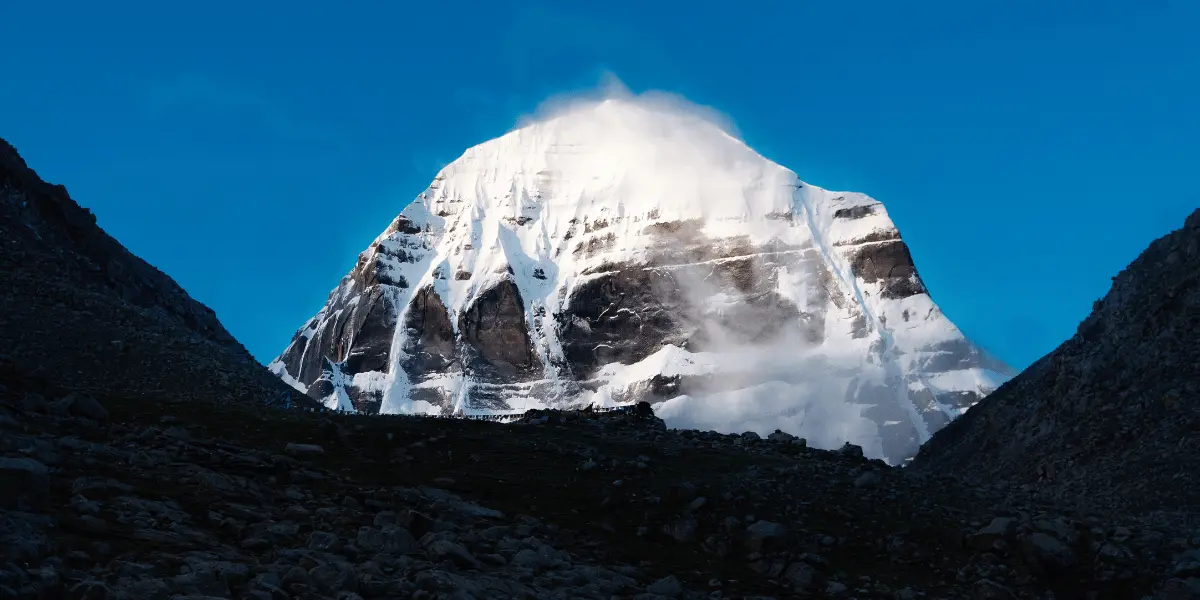
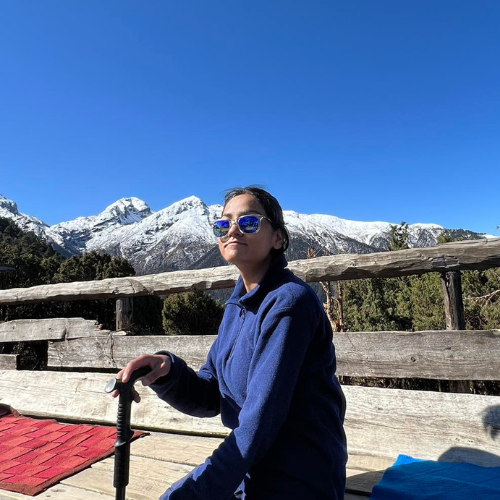 Mandira Itani
Mandira Itani